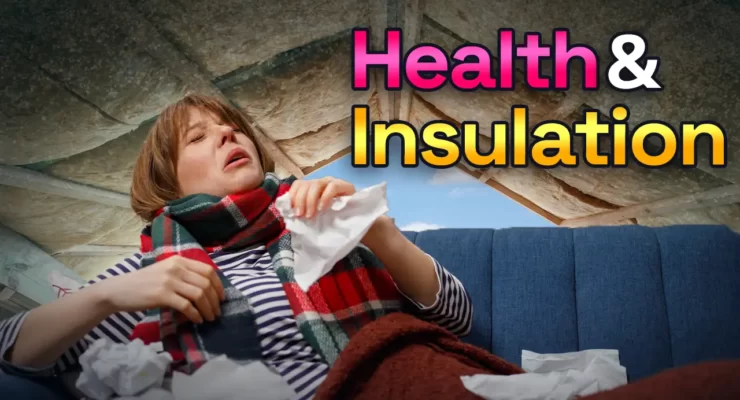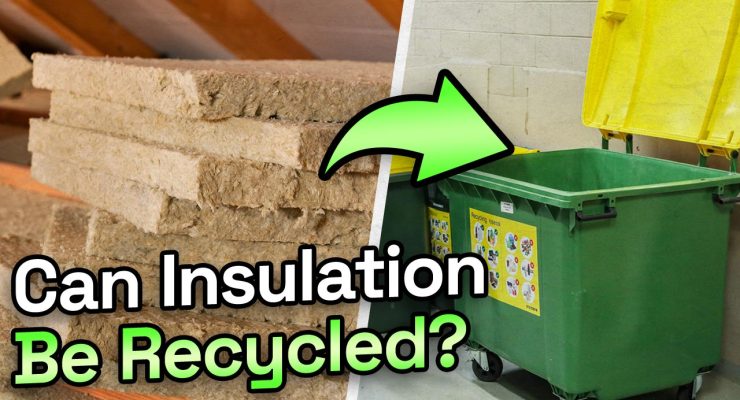Fast read
General Risks:
- Itchy eyes, throat, nose, and skin
- Possible rashes, breathing issues, nausea, and headaches
- Foul odours
Wet Insulation:
- Loses efficiency when wet; can cause mould and rot
- Dry quickly and use a moisture meter
Handling Insulation:
- Creates irritating dust and glass fragments.
- Clean with a HEPA-certified vacuum
- SPF insulation may cause asthma
Is Insulation Bad For My Health?
Handling, mistreating, or using some insulation products in an improper environment can be bad for your health. Itchy, watery, or stinging sensations in the eyes, throat, or nose are common side effects. You may also have itchy skin or skin rashes.
Some homeowners have experienced breathing issues on rare occasions, particularly if they have pre-existing asthmatic diseases or other respiratory disorders. Some people have experienced nausea, confusion/difficulty concentrating, and headaches in rare instances. Furthermore, you may notice a foul odour that does not appear to go away.
Wet Insulation
When glass fibre insulation becomes wet, it temporarily loses its thermal resistance, which reduces the energy efficiency of your house. It can, however, regain its insulating characteristics if it dries fast before being compacted.
Wet insulation in your attic does not normally dry up as soon as you might imagine. The moisture will eventually seep to the bottom, saturating the attic board and other building elements. Allowing dampness to persist for a few days can harm the insulating characteristics of your home and promote mould development and wood rot.
Allow your roofing contractor to use a moisture meter to identify dampness in the insulation and determine the best way to dry it out before it causes more harm. The roofer should also determine the source of the dampness and take suitable measures to alleviate it.
Common Effects of Touching Insulation
Aside from inhaling the chemicals within insulating materials, skin contact with these materials can have certain health consequences. When you cut dry form or handle loose, fluffy fibreglass or cellulose insulation, a lot of dust is created.
Fibreglass can also drop microscopic recycled glass fragments that irritate your skin. When an insulation contractor has finished working on your insulation, they should thoroughly clean the area with a vacuum equipped with a HEPA filter to remove any dust. Complete this before returning home to avoid any negative health impacts. Spray Polyurethane Foam (SPF) insulation is generally considered safe, but it has been linked to occupational asthma.
Causes of Itchiness from Insulation
When you come into touch with fibreglass insulation material, your skin may get itchy. The microscopic glass strands in insulation wool can hurt your eyes and skin. Excessive fibreglass contact can cause irritating contact dermatitis or skin irritation.
Fibreglass can irritate the eyes, nose, skin, and respiratory tract.
New building or remodelling projects commonly use SPF, but it can also pose certain health dangers.
SPF contains isocyanates, which can cause occupational asthma (WRA).

Safety Precautions to Take When Handling Insulation So It Doesn’t Go Bad
Installing and using fibreglass insulation is safe as long as you follow the specified safety precautions. Most insulating materials primarily pose the danger of skin, nose, eye, and upper respiratory system irritation, making insulation potentially harmful to your health. Wearing personal protection equipment and handling the insulation properly can help to reduce the amount of fibreglass dust.
Wear long pants, a long-sleeved shirt, sturdy shoes, socks, gloves, and a cap when dealing with fibreglass insulation. Other safety equipment to consider are safety goggles and a dust mask.
To avoid being exposed to fibreglass dust, never take fibreglass items from their packing until they are ready to be installed. Once again, to cut or shape the insulation, use the approved hand tools. Maintain a clean work space free of waste insulation materials, and provide sufficient ventilation during the installation.



